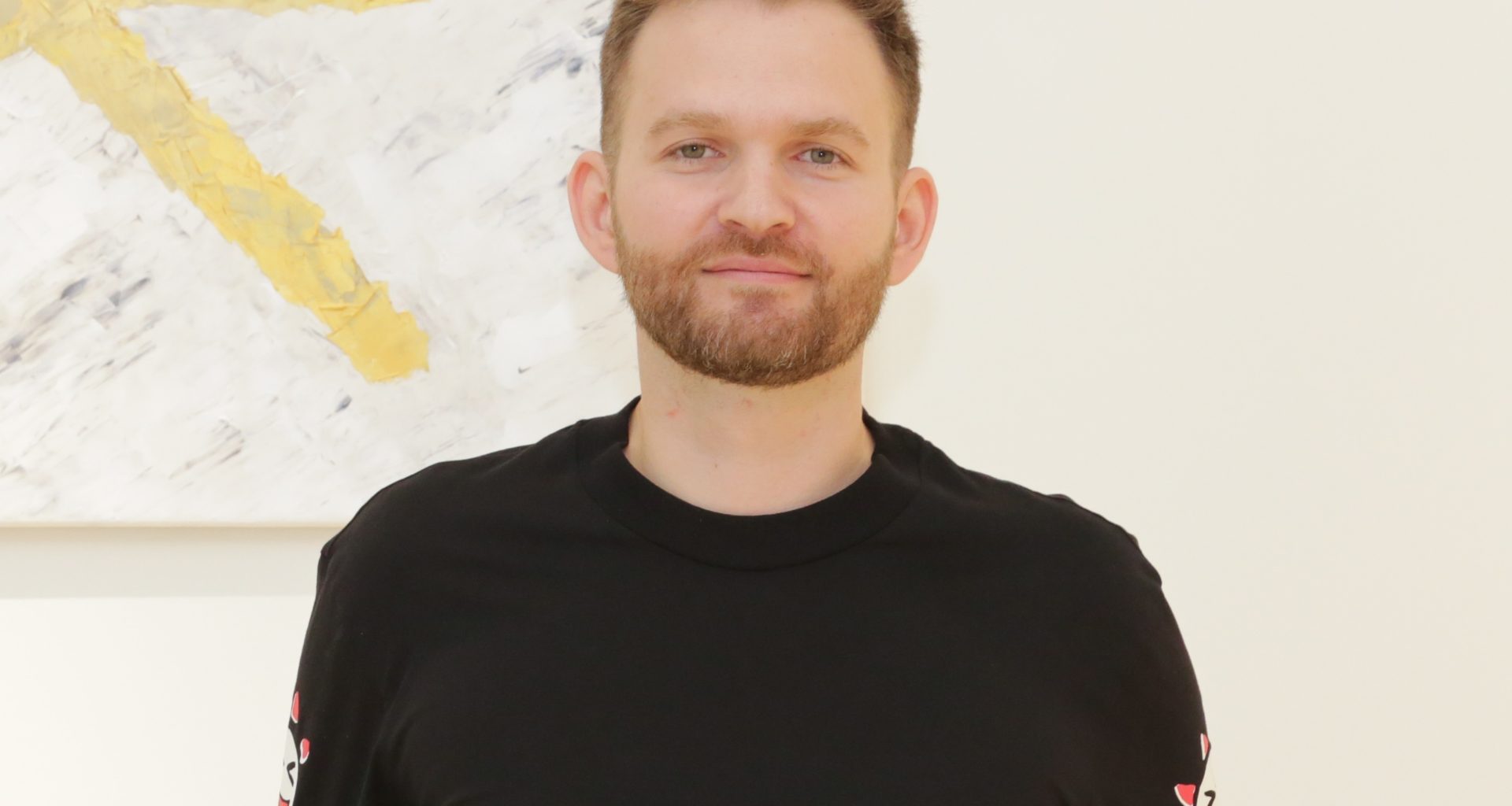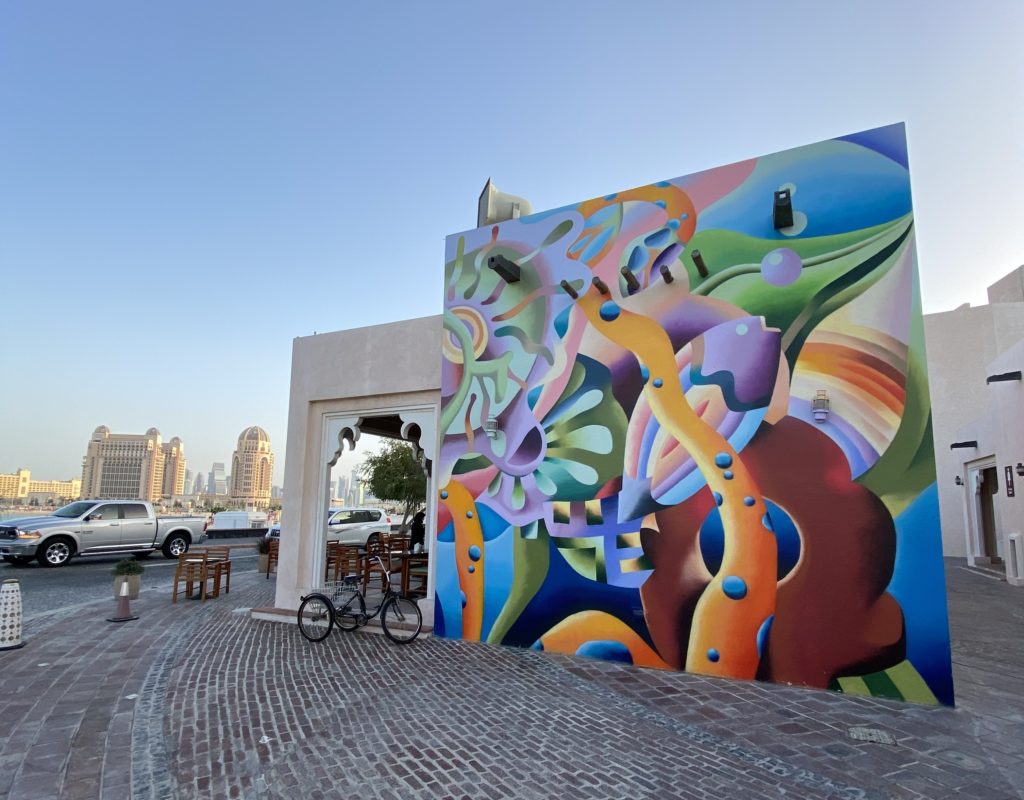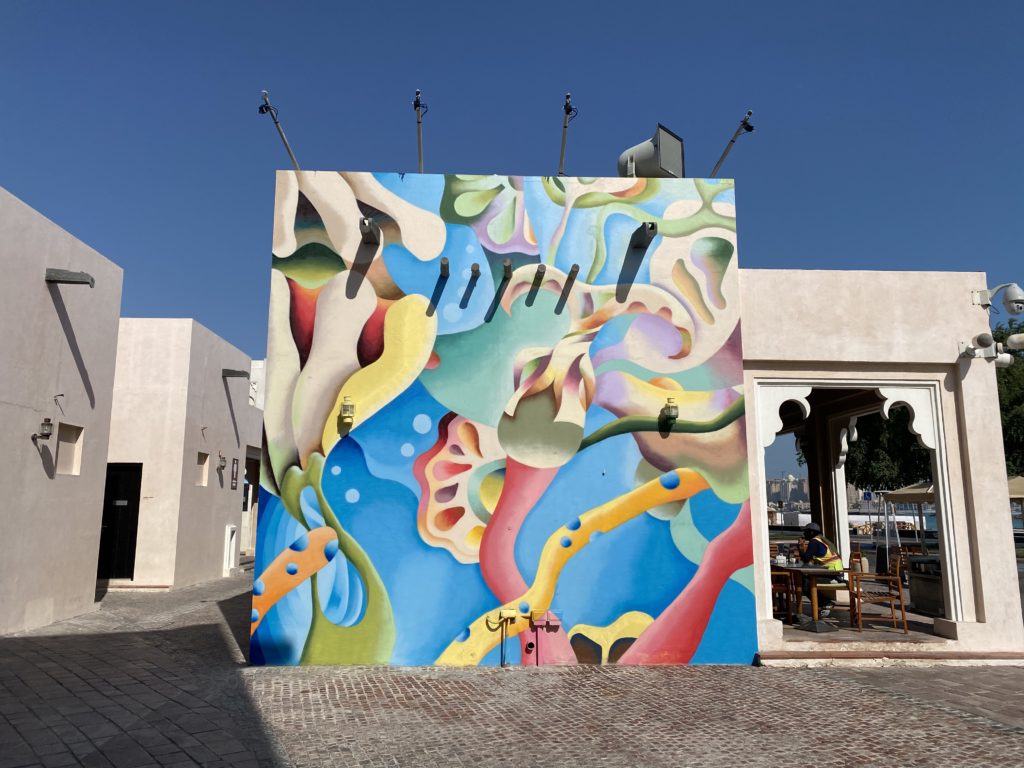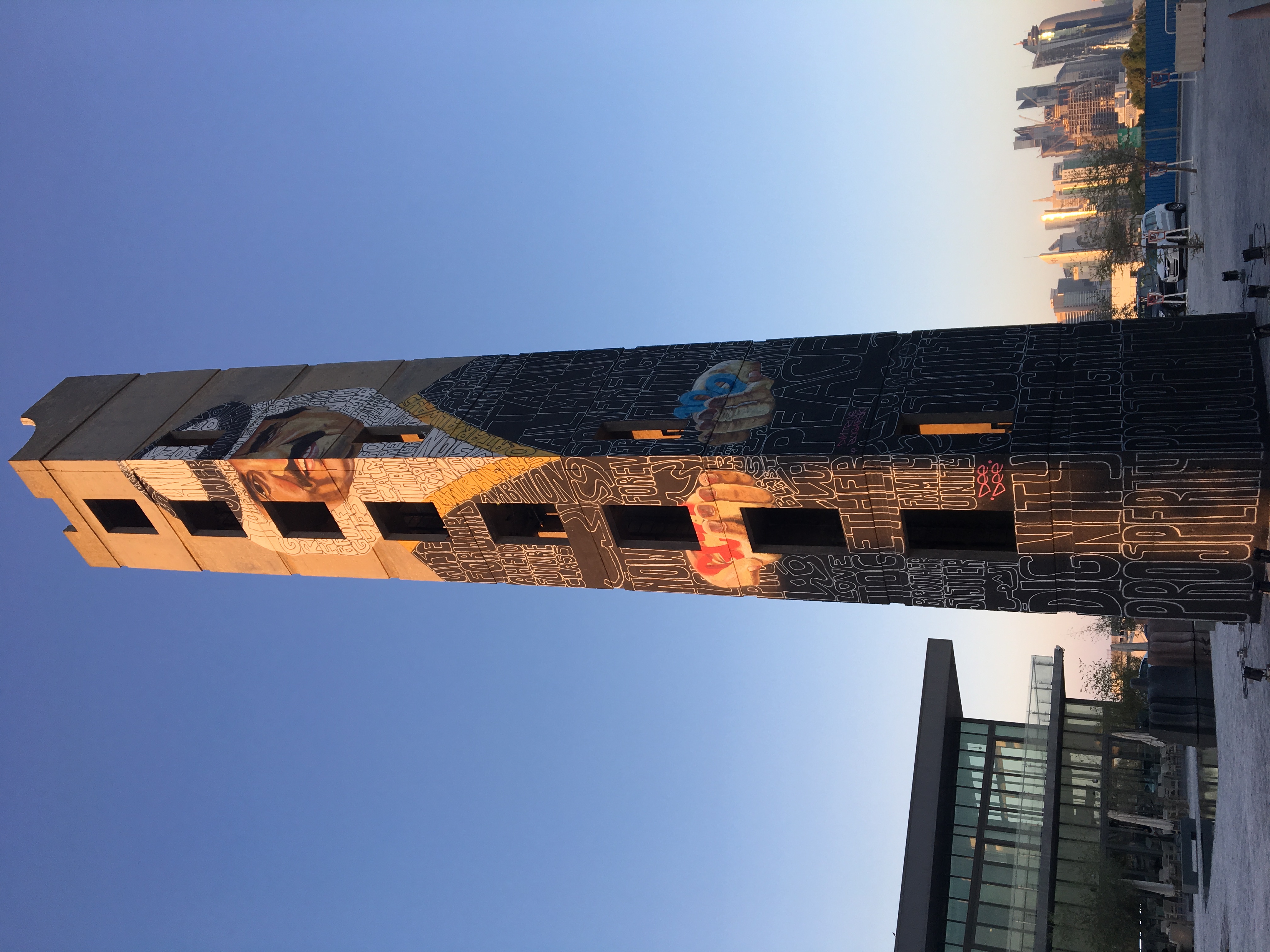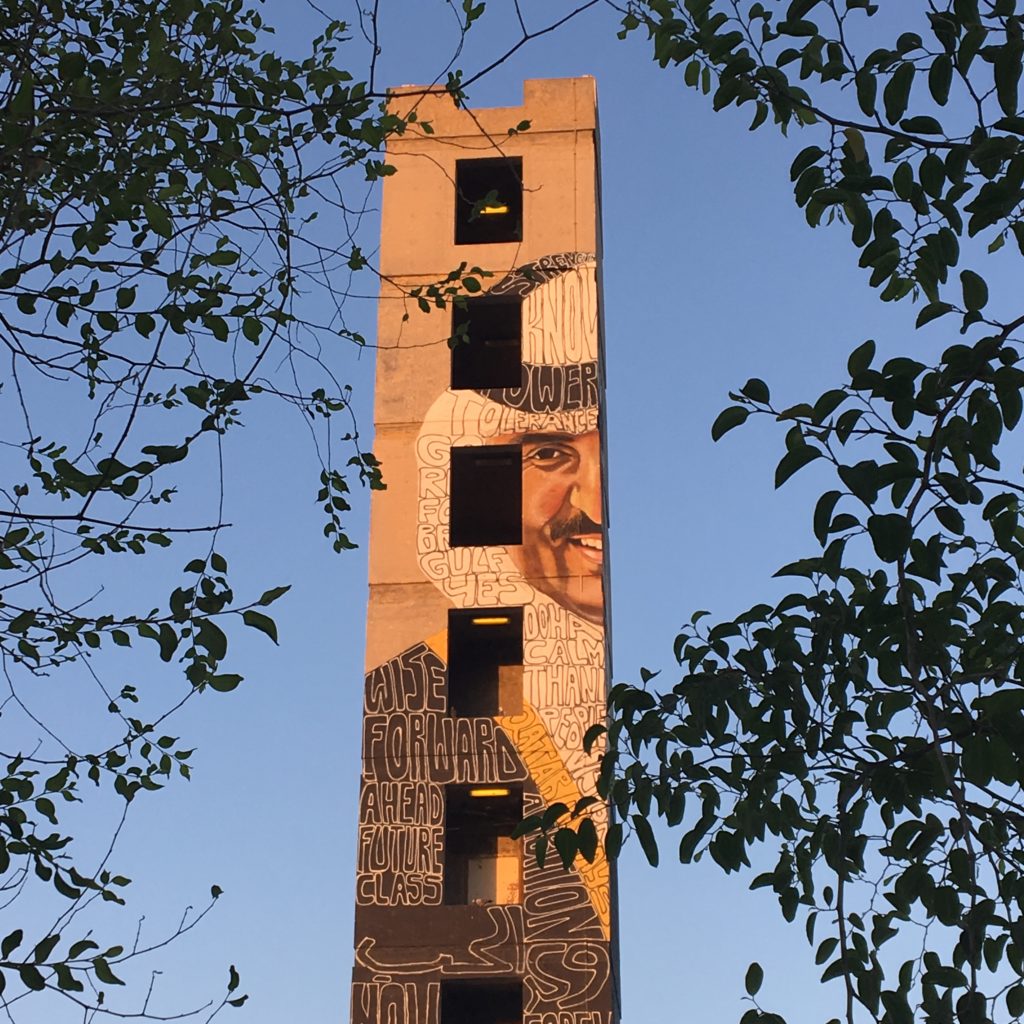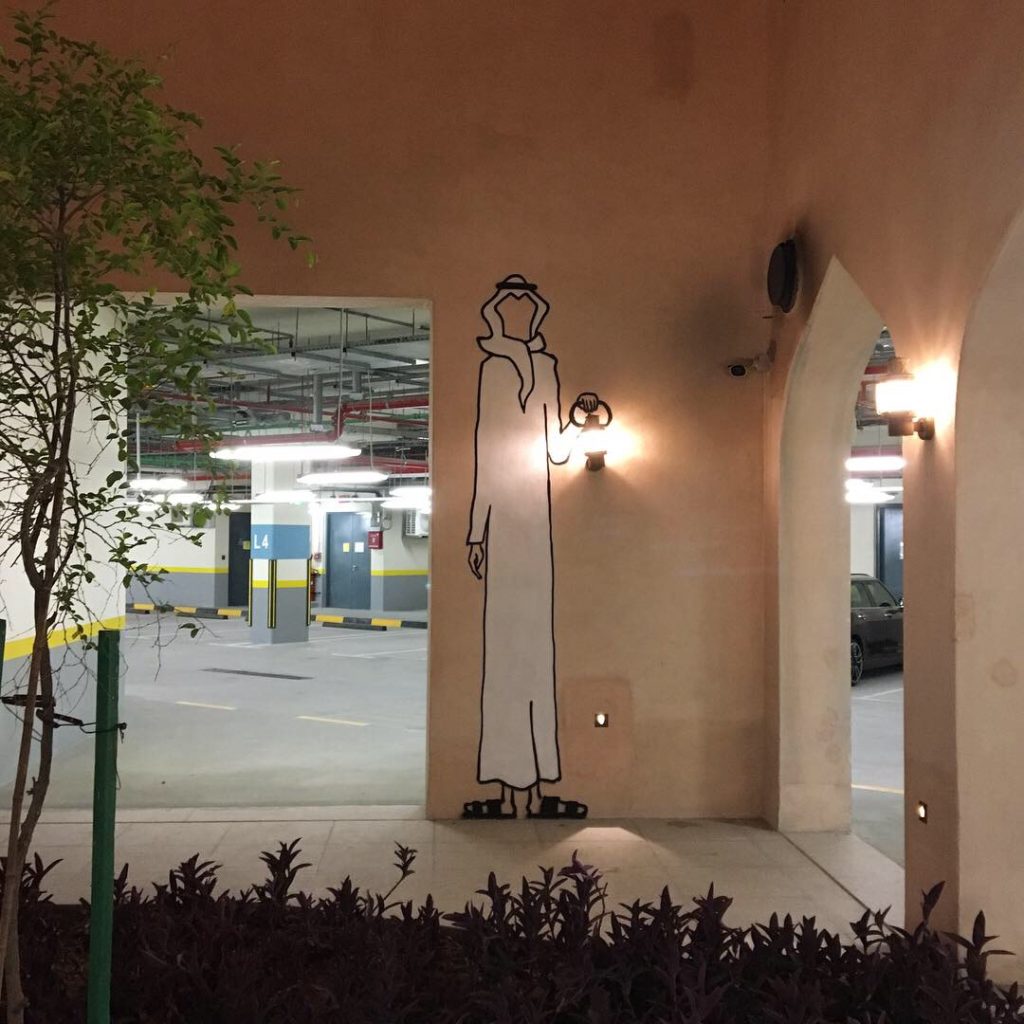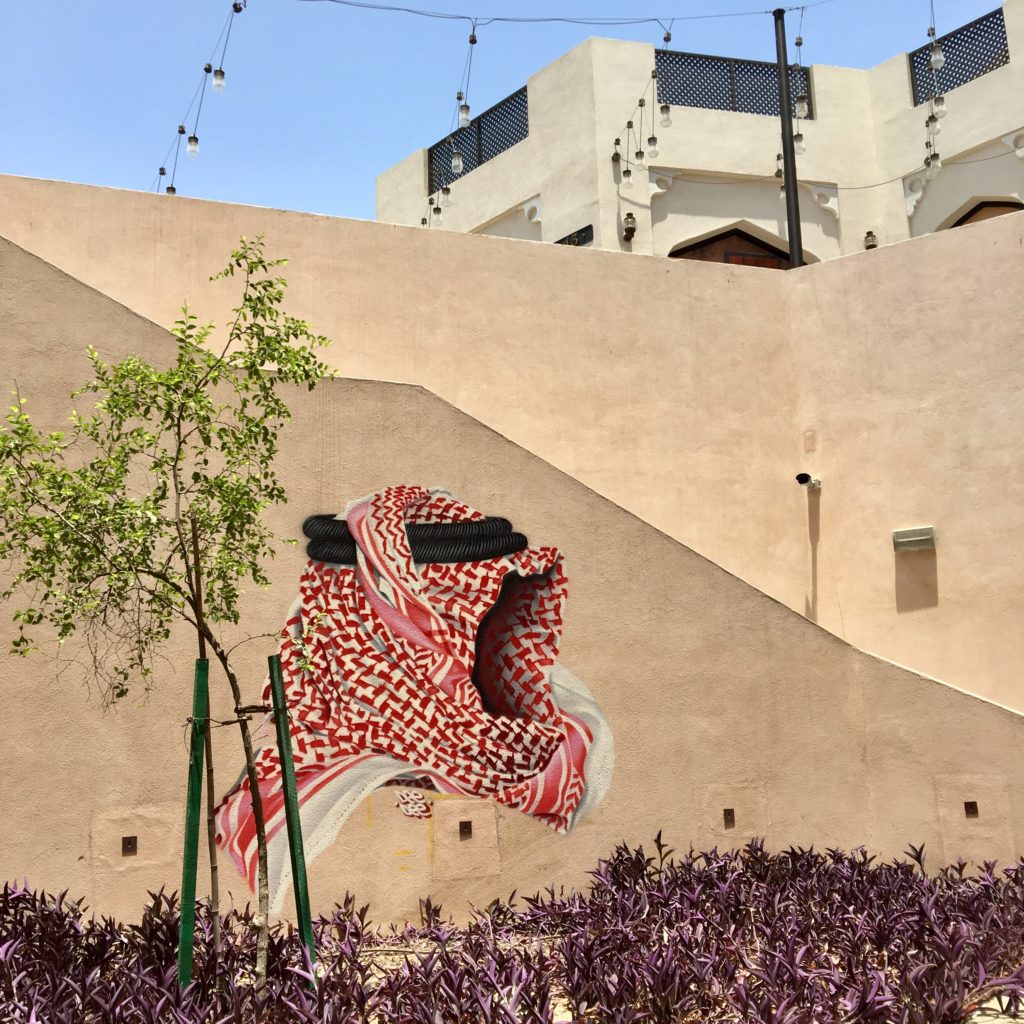Dimitrije Bugarski is a Doha, Qatar-based artist, originally from Serbia. An architect by profession, he is now pursuing his childhood love for the arts through graffiti, mural-making, and other commissioned work. A visual and street artist, he enjoys the freedom to seek out abandoned structures and what he calls ‘broken walls’ across Doha city to paint what he autonomously desires or is inclined to manifest through art.
Dimitrije is a well-known figure amongst local Qatari art circles. One of his most recognizable pieces was created on a tower during his artist residency at Doha’s Fire Station commemorating the 100 days of the Qatar blockade (also referred to as the Gulf crisis) by the United Arab Emirates, Saudi Arabia, and other Arab nations, which features a split face of Emir Tamim and his father Sheikh Hamad.
In 2020, Beyond Broken Walls, a short documentary directed and written by Qatari filmmaker Hissa G. Al-Mannai, was released detailing Dimitrije’s internal struggle with artistic self-expression and finding his authentic voice through his artwork.
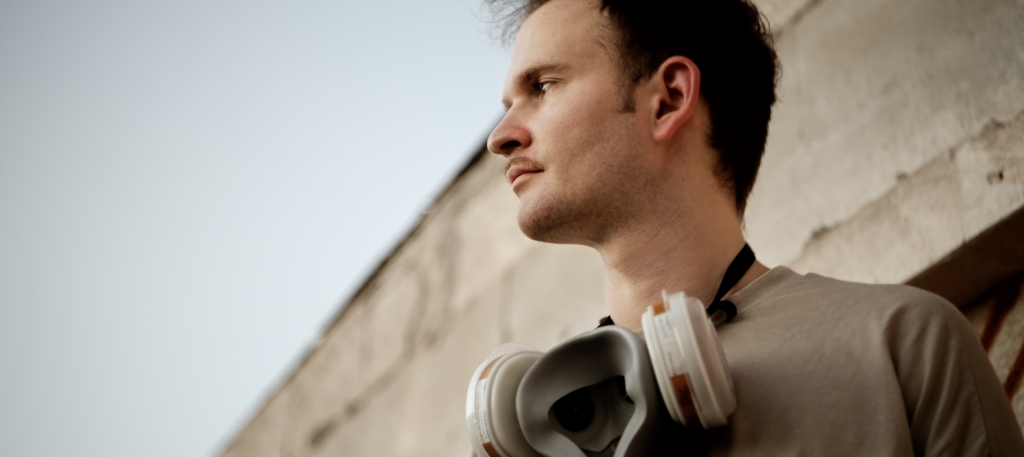
directed by Hissa G. Al-Mannai
Saira Malik (S.M.): Could you tell us about what you do and why you decided to take this path?
Dimitrije Bugarski (D.B.): I used to work as an architect, but right now I am with the Public Art of Qatar Museums. Being an architect is something I decided when I was starting high school. However, art has been part of my entire childhood, but being an artist is something I had to put on hold or went on hiatus during my years in university and the first few years of my professional life. What catalyzed my return to art was meeting Mubarak Al Malik and Thamer Al Dossari in 2015, two local [Qatari] street artists – that encounter reminded me of my brief high school graffiti adventure and motivated me to give it another try. Project by project I sort of became addicted to creating in front of a wall, and here I am today. Being a part of the local art scene led me to switching from architecture to public art.
S.M.: Hissa G. Al-mannai directed and produced Beyond Broken Walls, a short documentary about you in 2020. Tell us about how it came about, how much input you had in its making and finally, is it a true depiction of your life and work?
D.B.: Hissa and I used to talk about our shared interests in art and music. It was obvious that we should be working on something together, so one day Hissa came with an idea of making a short film about my art ventures. Her idea was inspired by some of my thoughts and views – the making of the film was completely hers. My input included finding suitable shooting locations and of course giving her a hard time while filming [Dimitrije says in jest]. I believe it depicts my work authentically, even though I can never tell with certainty if I am being completely honest with the public. Our artistic output is always filtered through various channels, involuntarily and subconsciously too.
S.M.: When it comes to painting alone on broken walls versus a commercial piece to be displayed at an art gallery, do you find this more fulfilling and what is the inspiration behind it?
D.B.: I am very thankful for all the commercial pieces I had a chance to make or be a part of. Still, I do favor moments spent doing broken walls as they provide a certain sense of freedom—being a place where you can be yourself. They also serve as a balance against the commissioned work, which keeps the passion for art in place.
S.M.: When did you make your first public piece of art and what was the motivation behind it?
D.B.: This is a bit of a blur, but I believe it was a temporary piece on a hoarding in Katara in 2016. A group of artists were gathered to paint there and Mubarak invited me to join. After that, I went on to paint some temporary walls during that year, and in 2017 I started with some ruined and abandoned walls that are still standing today.
S.M.: There is a common theme of cheetahs in a lot of your work. What is the significance of that and how do you generally pick the subject you want to focus on?
D.B.: Cheetahs are a subject that I was obsessed with during my kindergarten days. I have a bunch of drawings from that time back home in a folder, so one day I decided to recreate them and an exhibition in Galeries Lafayette happened. I throw a cheetah into my pieces now and again whether in a commissioned work or my street art.

Dimitirije's artwork at Galeries Lafayette, Qatar – (photo credit – Dimitrije Bugarski) 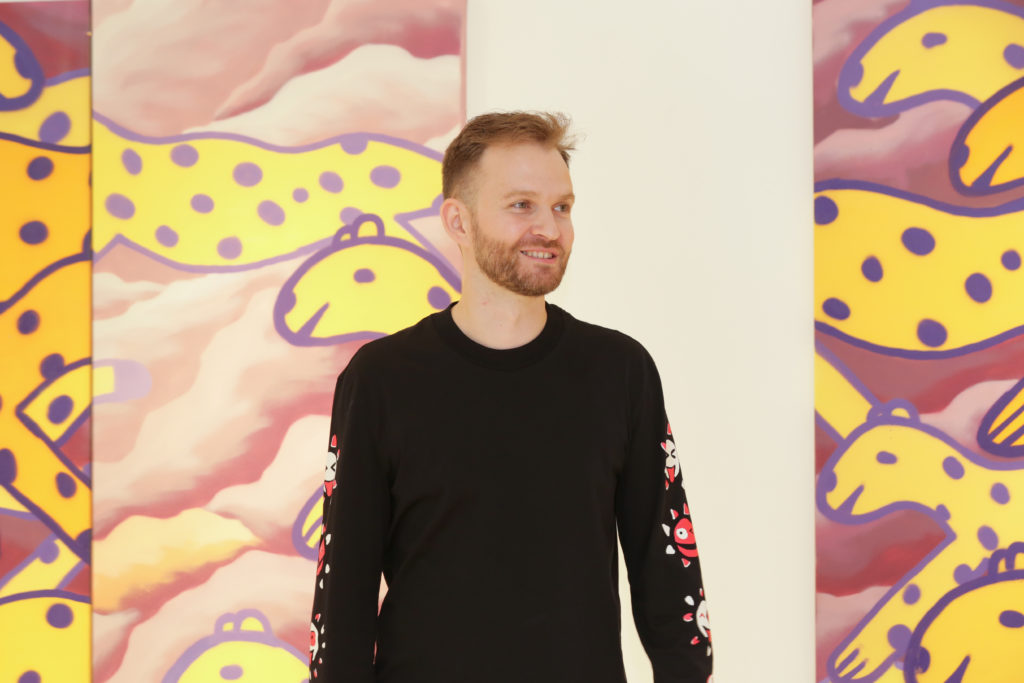
Dimitrije Bugarski at Galeries Lafayette, Qatar
(photo credit – Digitek)
There is no one way of selecting my subjects, but often the ideas come when I am behind the wheel. I try not to stick to the same subjects and styles for too long, as repetitiveness is dull and unstimulating.
S.M.: Which of your work are you most proud of and why?
D.B.: This shifts depending on my mood and how I perceive my own work, which is not always the same. However, I must admit the most significant is the one on a tower in Fire Station [artist residency in Qatar] where I marked, commemorating the 100 days of blockade a split face of Emir Tamim and his father Sheikh Hamad in 2017.
When it comes to the technique, I guess the faceless ghitra I painted in Katara was the one I am satisfied with the most in regards to attention to detail.
Out of my recent work, I would single out the mural in Katara done as a tribute to a late Qatari artist, Wafa Al Hamad. I recreated her painting, “A Dream on the Seabed” – the shapes and color combination made the process so enjoyable. It was a real honor to be given an opportunity to celebrate her work and contribute to the Qatari art scene in such a way.
(photo credit – Dimitrije Bugarski)
S.M.: I'm curious, and I'm sure the reader would be too about whether you have ever received backlash or negative attention or criticism for the art that you create-both because of the topic (political) and the medium (graffiti).
D.B.: The backlash happened only once, and it was for a collage dated to my elementary school I decided to post on Instagram. Due to its explicit content, people pointed out that it is inappropriate so I took it down. I think there was no backlash to my street art because I am aware of where to set the limit.
As for the negative feedback, I do face it when I try to initiate certain projects with stakeholders who are not familiar with the term street art and are not very open to it. It is either they reject it from the start or it takes an effort bringing them to understand where I come from. It is all part of the scene development and bringing awareness among the people.
S.M.: Can you elaborate on what might be deemed 'self-censorship.' Do you find yourself doing so because you are working in the region, because of the topics and themes you choose to tackle?
D.B.: It is related to me living in the region. I slowly adapted to my surroundings and absorbed the local culture to a certain extent. My sketches and ideas might not necessarily transfer fully to the medium that the public sees as they get filtered through this subconscious limitation that we set ourselves against because we're anticipating people's predictable expectations or reactions.
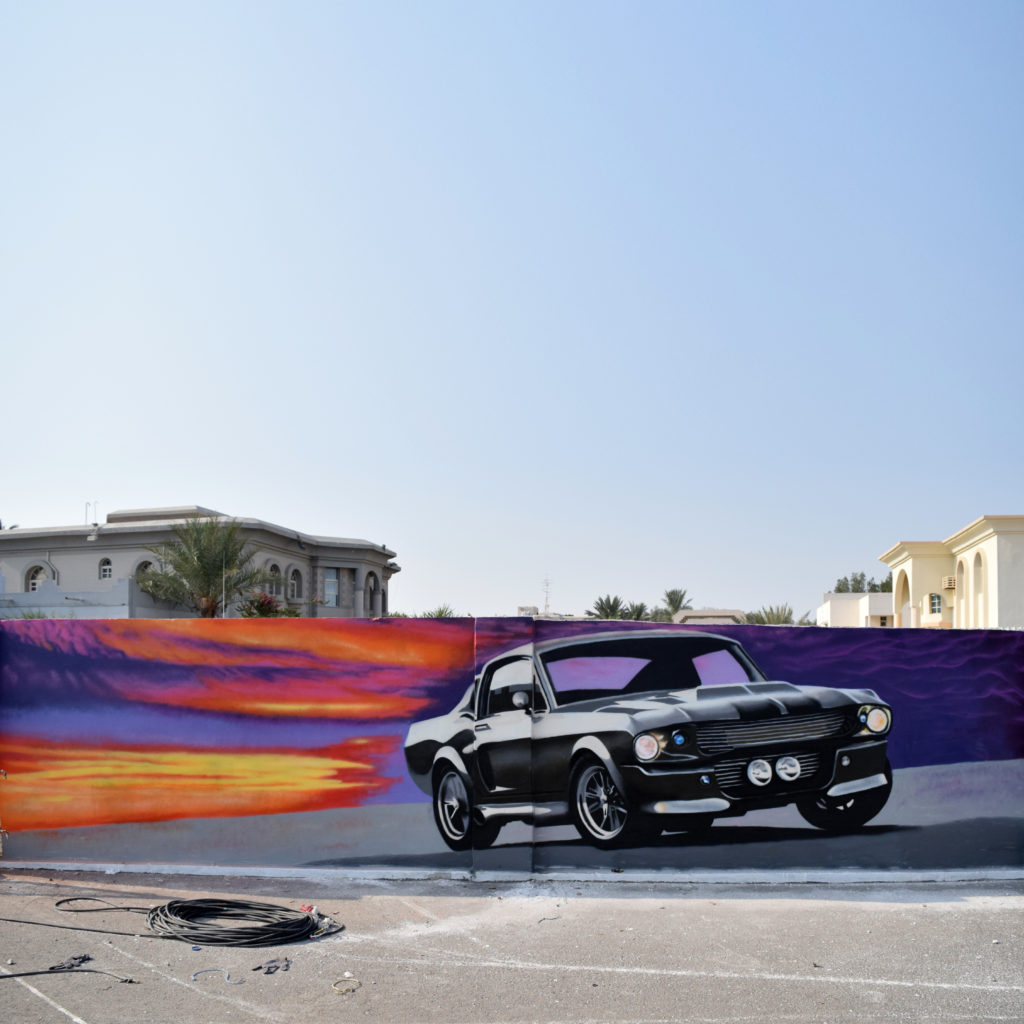
Dimitrije's artwork at Drive In Cinema (photo credit – Dimitrije Bugarski) 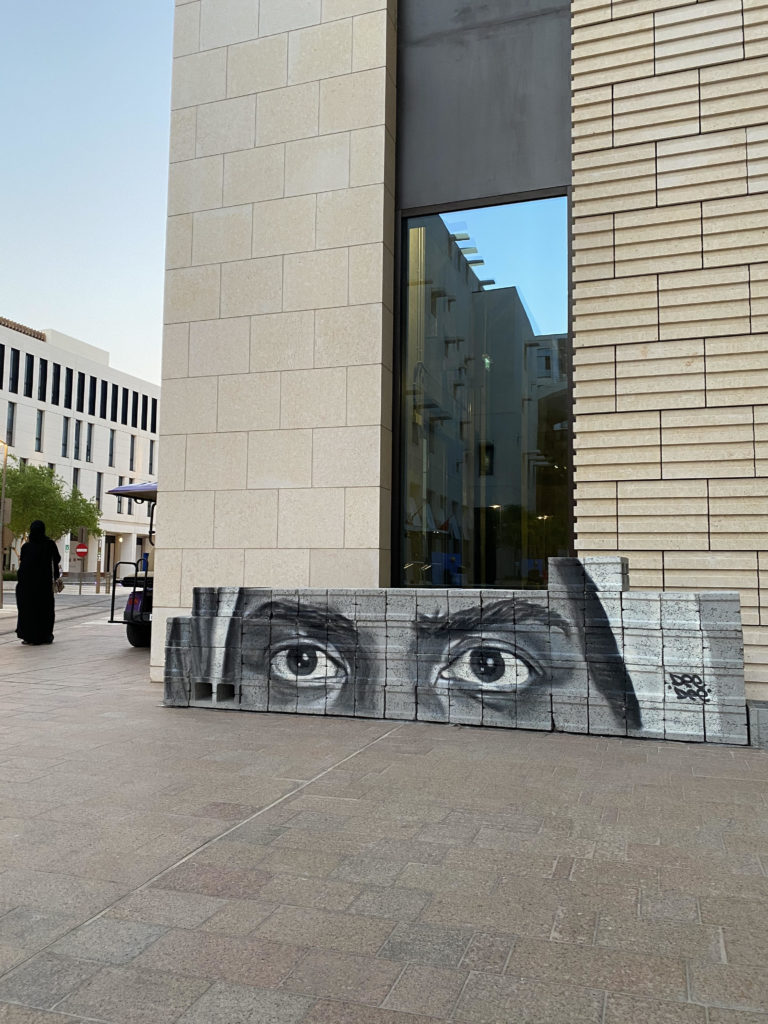
Dimitrije's artwork at Msheireb(photo credit – Dimitrije Bugarski) 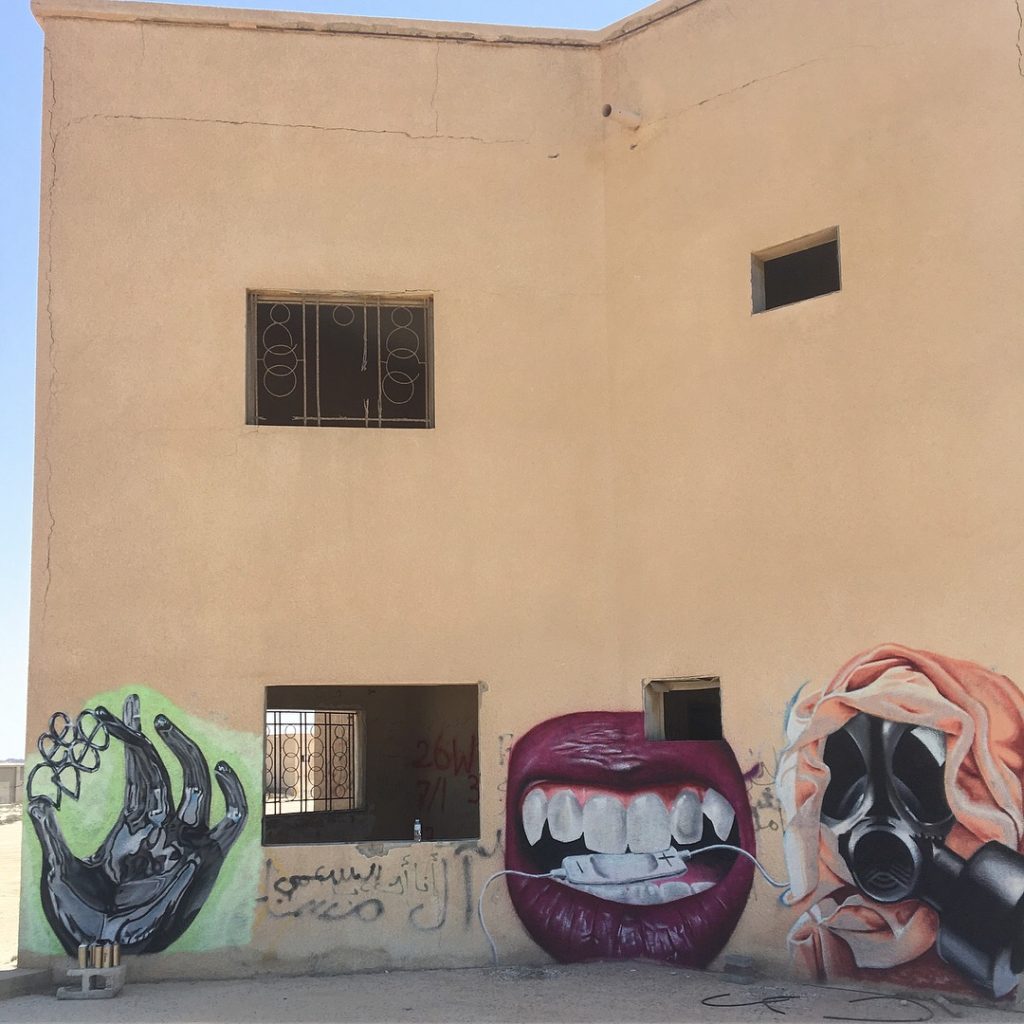
Dimitrije's artwork (photo credit – Dimitrije Bugarski) 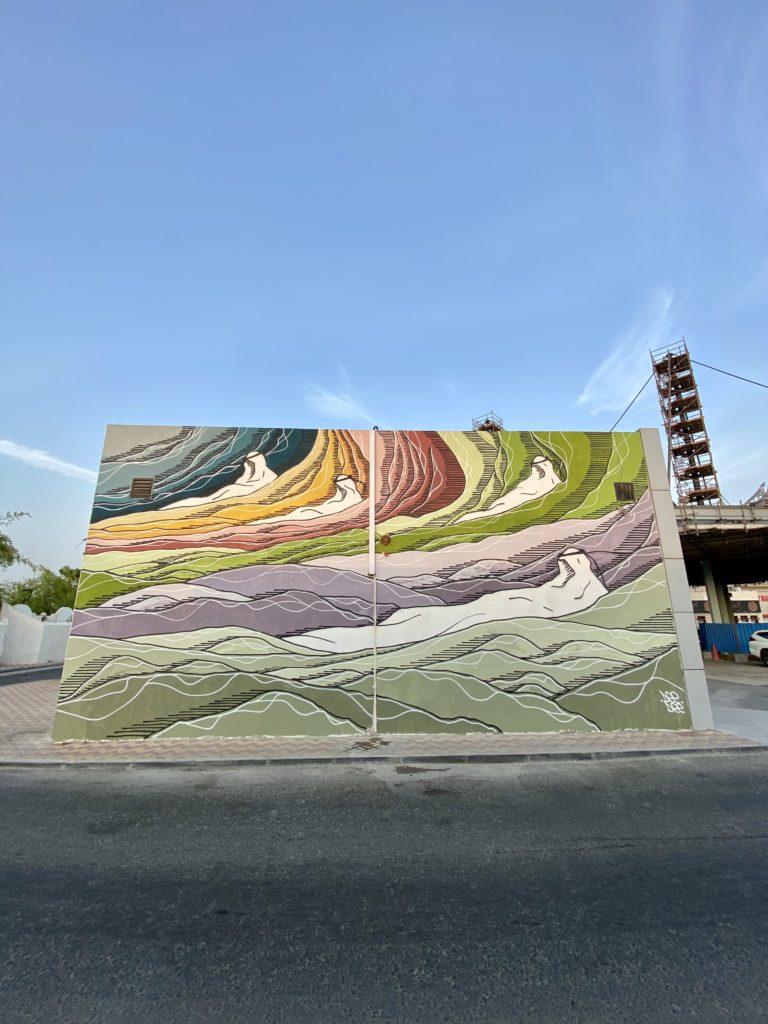
Dimitrije's artwork at West Bay Petrol Station (photo credit – Dimitrije Bugarski)
S.M.: We want to know, from your perspective and experiential insight, more on the creative scene in Doha, Qatar?
D.B.: The scene in Doha has definitely changed since I started here and it is still changing and developing, especially street art. Art in a traditional sense is still there as it always was, but art installations, murals, and contemporary sculptures are gradually finding their place in the city with artists being more encouraged and supported to express themselves differently, whether it comes from a cultural institution or other artists' work as a motivation.
S.M.: Tell us about your upcoming projects?
D.B.: There are a couple of commissions coming in October [2021] and few of my own initiatives around the city pending permits. I am in constant scouting mode while on the road of walls that catch my attention, that may potentially turn into future passion projects.
A solo show is something I had in mind for a while and will aim for early 2022, but more about that later in this year once I have a clear outline.
Words: Saira Malik
Images: Header image – photo credit to Digitek at Galeries Lafayette;
all other image credits listed above;
all images courtesy of Dimitrije Bugarski
instagram.com/deedee.ness

